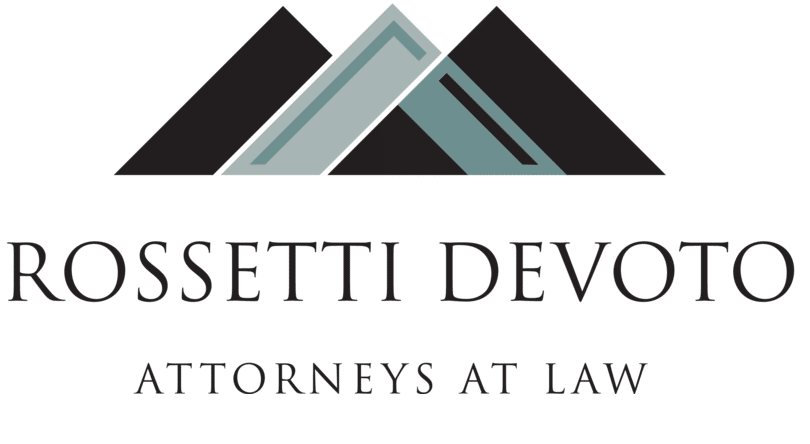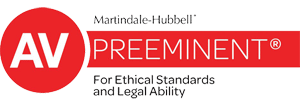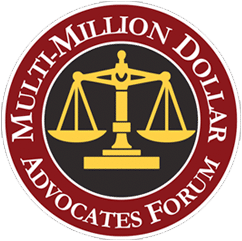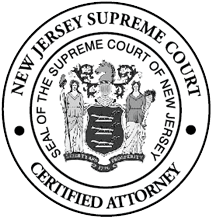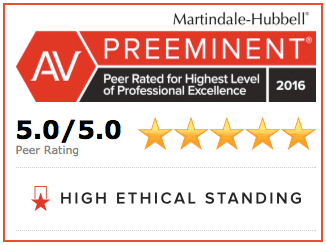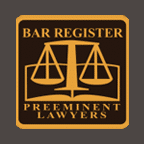Products Liability – Knowing & Preparing for NJ’s Successor Liability
New Jersey’s Successor Liability By: Esq. & Andrew J. Rossetti, Esq.
What is Exactly Successor Liability?
Your company is looking to acquire another entity’s assets. Consequently, in-house counsel has examined the purchase agreement to ensure it incorporates the general rule of successor liability: “where one company sells or otherwise transfers all its assets to another company the latter is not liable for the debts and liabilities of the transferor, including those arising out of the latter’s tortious conduct.”[1] In other words, if Company A sells or transfers all of its assets to Company B, then Company B is not liable for Company A’s debts or liabilities. But are you really clear of all successor liability? Well, the answer in New Jersey is no.
In fact, our courts have recognized four exceptions that warrant the imposition of successor liability: (1) where the purchasing corporation expressly or impliedly agreed to assume such debts and liabilities; (2) the transaction amounts to a consolidation or merger of the seller and purchaser; (3) the purchasing corporation is merely a continuation of the selling corporation; or (4) the transaction is entered into fraudulently in order to escape responsibility for such debts and liabilities. [2] Additionally, New Jersey has added to this list with the adoption of the “product-line exception.”
Origination of the Product-Line Exception
In truth, the product-line exception to successor liability originated in 1977 from the California Supreme Court in Ray v. Alad Corp., 136 Cal. Rptr. 574 (1977). In Ray, the plaintiff was injured after falling from an allegedly defective ladder. One year prior to the injury, the manufacturer of the ladder dissolved and sold its assets, stock in trade, trade name and goodwill. The purchasing entity continued to manufacture the same line of ladders as the selling corporation while using their same name, equipment, employees and customer lists. [3] As a result, the Court concluded that “a party which acquires a manufacturing business and continues the output of its line of products…assumes strict tort liability for defects in units of the same product line previously manufactured and distributed by the entity from which the business was acquired.” [4] And just like that, the product-line exception to successor liability was born.
In fact, the Ray court gave a three-part justification for the imposition of liability upon a successor corporation: “(1) The virtual destruction of the plaintiff’s remedies against the original manufacture caused by the successor’s acquisition of the business, (2) the successor’s ability to assume the original manufacturer’s risk-spreading role, and (3) the fairness of requiring the successor to assume a responsibility for defective products that was a burden necessarily attached to the original manufacturer’s good will be enjoyed by the successor in the continued operation of the business.” [5] Currently, California, Washington, New Mexico, Pennsylvania, Mississippi and of course, New Jersey have definitively adopted or referred favorably to the product-line exception. [6]
New Jersey’s Adoption of the Product-Line Exception
In 1981, the New Jersey Supreme Court officially adopted the product-line exception in the seminal Ramirez case. The plaintiff was injured while operating an allegedly defective power press. From a purchase agreement years earlier, the defendant acquired the selling corporation’s trade name, physical plant, manufacturing equipment, inventory, manufacturing designs, patents and customer lists. [7] Furthermore, the Court held that “where one corporation acquires all or substantially all the manufacturing assets of another corporation, even if exclusively for cash, and undertakes essentially the same manufacturing operation as the selling corporation, the purchasing corporation is strictly liable for injuries caused by defects in units of the same product line, even if previously manufactured and distributed by the selling corporation or its predecessor.” [8]
Furthermore, the Court reasoned that by acquiring the selling corporation’s manufacturing assets and by holding itself out to potential customers as the manufacturer of the same line of the selling corporation’s products, the selling corporation benefitted substantially from the legitimate exploitation of the accumulated good will earned by the selling corporation’s product line. [9]
Adopting the product-line exception
By adopting the “product-line exception, Ramirez expanded plaintiffs’ recourse against successor corporations, but not to the exclusion of remedies against predecessor companies that remain extant and viable and therefore liable.”[10] So, despite a company’s attempt to transfer all assets and liabilities to a different entity, if that predecessor company thereafter remains in business and continues to exist, it remains liable for its own conduct.[11]
In order to pursue a successor liability claim you must name the successor entity in your complaint. When in doubt, name both the predecessor and successor entities that may be responsible. Ultimately, your claim will almost certainly come down to a motion for summary judgment. Hence, remember that the “continuation of the product-line test…presents a mixed question of law and fact to a trial judge, and if the factual component of the issue is subject to a bona fide issue of material fact, the resolution of the question must await a trial.” [12]
The Exact Product Line?
So what constitutes the same product line? Although Ramirez makes this a requirement, our court system has not laid out a specific definition. Fortunately, there has been some guidance on the issue from Bussell v. DeWalt Products Corp., 259 N.J. Super. 499 (App. Div. 1992). There, the plaintiff suffered amputations while using a saw manufactured by DeWalt. Years earlier, Black & Decker purchased DeWalt’s saw manufacturing assets. Defendant argued that the saw in question was not the same product line because it was upgraded over the years and was not the same exact product as the DeWalt saw.
Furthermore, the Court found that it was not important that the saw manufactured by Black & Decker was updated with technological advances and thus was not the exact same one manufactured by DeWalt. The Court stated that the successor must undertake essentially the same manufacturing operation, and noted that the “word ‘essentially’ does not mean ‘identically.'”[13] In fact, exactness is not a definitive requirement.
Product-Line Exception in a Bankruptcy Sale
Unlike a statutory merger where “all of the liabilities of a former corporation attach to the surviving corporation”[14], a bankruptcy is much more complex, and many corporations need the help and support of a bankruptcy attorney in Harrisburg PA or wherever their location is. Initially it may be undetermined which assets or liabilities will be discharged or acquired. In fact, the product-line exception was revisited by the New Jersey Supreme Court in Lefever v. K.P. Hovnanian Enter., Inc., 160 N.J. 307 (1999), which involved an asset sale under a Bankruptcy Section 363 Order. In Lefever, an injured forklift operator brought an action under the product line exception against the manufacturer’s successor that acquired the product line owner’s assets at the bankruptcy sale. Hence, these assets included the engineering data, dealers, inventory, work in process, accounts receivable, plant and manufacturing equipment. [15]
The purchasing corporation also benefited from claiming that the predecessor’s founder was also the founder of their company and that their product quality and leadership role in the forklift industry never changed. Lastly, they claimed to have a “continuity of enterprise” with the same personnel and dealers. [16]
Applying the product-line exception
Applying the product-line exception, the Court held for the plaintiff, reasoning that recourse is justified when a successor corporation enjoys the trade name, good will and continuation of an established manufacturing enterprise. Moreover, the Court stated: “Ready access to counseling…enabled [the purchasing corporation] to structure the acquisition to avoid or accept successor liability. Furthermore, it should not seek to have it both ways-trading on the good will generated by a long-standing customer base, yet disavowing responsibility to those same customers.” [17] Moreover, the Court also noted that liability “disclaimers are ineffective in insulating the buyer from successor liability when other principles of law require the imposition of liability.” [18] Overall, the “supremacy of federal bankruptcy law prevents the application of state common law to claims against a successor business enterprise that has acquired its assets through a bankruptcy sale only if the general bankruptcy court has ‘dealt with’ the claim.” [19]
Preventative Steps Buyers Can Take
Firstly, make sure your purchase agreement is clear, unambiguous, and expressly excludes any assumption of the seller’s debts or liabilities. An additional indemnity clause should also be included regarding prior tortious conduct. Then, analyze the potential sources of liability. Moreover, complete an investigation of the industry the seller is involved in. Afterward, identify any product or practice that may give rise to post-sale liability. Moreover, you must account for certain industries having products that come with higher claim occurrences. Once you are fully informed, you will have the ability to discuss perhaps the most important step, insurance.
In fact, potential buyers should maintain insurance that covers the pre-sale conduct and products of the selling company. Then, contract for the selling corporation to maintain their corporate existence post-closing and retain an additional post-closing insurance policy. Furthermore, a selling corporation can also fund and set aside future occurrences to account for any potential liability claims. Moreover, these terms will have to be negotiated. So, any discrepancy can be resolved by adjusting the purchasing price. In fact, it may be beneficial to pay more at the outset to lower your future exposure to successor liability.
To Conclude
Lastly, remember Ramirez. If you purchase substantially all of the manufacturing assets of a company and undertake essentially the same manufacturing operation as the selling corporation, you are strictly liable for injuries caused by defects in units of the same product line, even if the former company manufactured them. Therefore, take this precedent into account if you are going to continue to produce the same (not exact) product line of the selling corporation.
Esq. and Andrew J. Rossetti, Esq. are plaintiff’s personal injury attorneys at Rossetti & DeVoto, PC, in Cherry Hill, New Jersey.
References
[1] Menacho v. Adamson United Co., 420 F. Supp. 128, 131 (D.N.J. 1976) (applying New Jersey law).
[2] Ramirez v. Amsted Indus., Inc., 86 N.J. 332, 340-41 (1981).
[3] Ray v. Alad Corp., 136 Cal. Rptr. 574 (1977).
[4] Ray v. Alad Corp., 136 Cal. Rptr. 574, 578 (1977).
[5] Ray v. Alad Corp., 136 Cal. Rptr. 571, 580 (1977).
[6] Martin v. Abbott Labs., 689 P.2d 368 (Wash. 1984); Dawejko v. Jorgensen Steel Co., 434 A.2d 106 (Pa. Super.
1981); Ramirez v. Amsted Indus. Inc., 431 A.2d 811 (N.J. 1981); Garcia v. Coe Mfg. Co., 933 P.2d 243 (N.M.
1997); Huff v. Shopsmith Inc., 786 So.2d 383 (Miss. 2001) (agreeing with the exception in dicta).
[7] Ramirez v. Amsted Indus., Inc., 86 N.J. 332, at 335, 352 (1981).
[8] Ramirez v. Amsted Indus., Inc., 86 N.J. 332, 358 (1981).
[9] Ramirez v. Amsted Indus., Inc., 86 N.J. 332, 352 (1981).
[10] Arevalo v. Saginaw Mach. Systems, Inc., 344 N.J. Super. 490, 504 (App. Div. 2001).
[11] Arevalo v. Saginaw Mach. Systems, Inc., 344 N.J. Super. 490, 498-99 (App. Div. 2001); State, Dep’t of
Environmental Protection v. Ventron, 94 N.J. 473, 502-03 (1983).
[12] Saez v. S & S Corrugated Paper Mach. Co., 302 N.J. Super. 545, 551 (App. Div. 1997).
[13] Bussell v. DeWalt Products Corp., 259 N.J. Super. 499, 518 (App. Div. 1992).
[14] Arevalo v. Saginaw Mach. Systems, Inc., 344 N.J. Super. 490, 500 (App. Div. 2001).
[15] Lefever v. Lull Indus., Inc., 311 N.J. Super. 1, 3-4 (App. Div. 1998) aff’d sub nom. Lefever v. K.P. Hovnanian
Enter., Inc., 160 N.J. 307 (1999).
[16] Lefever v. K.P. Hovnanian Enter., Inc., 160 N.J. 307, 326 (1999).
[17] Lefever v. K.P. Hovnanian Enter., Inc., 160 N.J. 307, 327 (1999).
[18] Lefever v. K.P. Hovnanian Enter., Inc., 160 N.J. 307, 319 (1999).
[19] Lefever v. K.P. Honanian Enter., Inc., 160 N.J. 307, 310 (1999).
